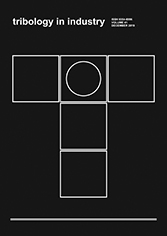Volume 42, No 2, 2020, Pages 177-190
Tribological Performance of Brass Powder with
Different Copper and Zinc Content in the Brake pad
Authors:
K. Asrar Ahmed ![]() ,
S. Rasool Mohideen
,
S. Rasool Mohideen ![]()
![]() ,
,
M.A.S. Balaji ![]() ,
B. Surya Rajan
,
B. Surya Rajan ![]()
Received: 24 October 2019
Revised: 27 December 2019
Accepted: 14 March 2020
Published: 15 June 2020
Abstract:
Metallic fillers play a significant role in the brake friction material formulation due to its high thermal conductivity, tribo-load bearing ability against the rotor, friction stability and wear resistance. Brass powder is widely used in the formulation because of good thermal conductivity, fade and wear resistance. The commercial brass composed of 70 wt.% copper and 30 wt.% zinc. In this work, the brass powders with identical morphology and different weight percentage (wt.%) copper and zinc content is evaluated for its tribological and physico-mechanical performance in the brake friction material formulation. Three set of brake friction pads were fabricated with three different brass powders of varying copper and zinc content, 60% Cu-40% Zn, 70% Cu-30% Zn, and 80% Cu-20% Zn, respectively. The objectives of this study were to find the physico-mechanical properties based on Indian Standard IS 2742 and tribological performance of the brake pads based on ASTM G99-95 using pin-on-disc tribometer. The wear mechanism of the brake composite of worn surface was studied using scanning electron microscope. The brake friction composites were ranked based on extension evaluation method by considering the tribo-mechanical performance parameters. It is observed that brass with 80% Cu and 20% Zn proved to be the best performer based on the weighted average dependent degree of extension evaluation.
Keywords:
Brass powder, Friction, Wear, Copper, Zinc, Extension evaluation method





